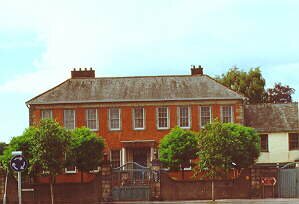Index
page 2
Cockermouth

|
Towns Index |
page 2
|
||
 |
|||
|
|||
|
There was a settlement at Cockermouth long before the arrival of the Romans in the first century AD. Stone Age man ( around 10,000 years ago in the north of England) has left traces in the area. There is a later earthwork above the town called Tute Hill, of which little is known. Four miles or so to the east is a Stone Circle.
The area has always been fertile farming land, and the two rivers that meet here would provide early settlers with fresh water and fish. The Romans built their fort Derventio at nearby Papcastle across the River Derwent. It was one of the larger forts in northern England, though like many others it was robbed of stone after the Romans had left (much was used in the walls of Cockermouth Castle) and not much survives. Cockermouth doesn't feature in the Domesday Book of 1086, being under the control of the Scots at the time. Soon after it was taken by the English and the castle founded shortly after around 1106. The castle was built in a good defensive position overlooking the town and later was able to fend off a superior Scots force which invaded in 1387. The castle again saw action during the War of the Roses and the English Civil War Mary Queen of Scots stayed a short while in the town before going to Carlisle, staying at Cockermouth Hall. As already mentioned Fletcher Christian and William Wordsworth were of this Parish, so also was the noted scientist John Dalton (1766-1844), Fearon Fallows, astronomer, and John Peel the huntsman made famous in song by John Woodcock Graves who also lived here. In 1965 51 towns throughout the U.K. were designated 'gem towns' by the Council for British Archaeology , and considered to be of such importance to the national heritage that their preservation was recommended. Cockermouth was one of them, and deservedly so. This friendly and relaxed town should be high on the list of places to stay or visit there is so much going on in and around it. Set in truly wonderful countryside, it is ideally located for the exploration of the fells and lakes of the Lake District and the Cumbrian coast to the west. Carlisle and routes to Scotland and Northumberland are all within easy reach.
|
|
Main Index |
Next Town |
Copyright © EDGE 1997